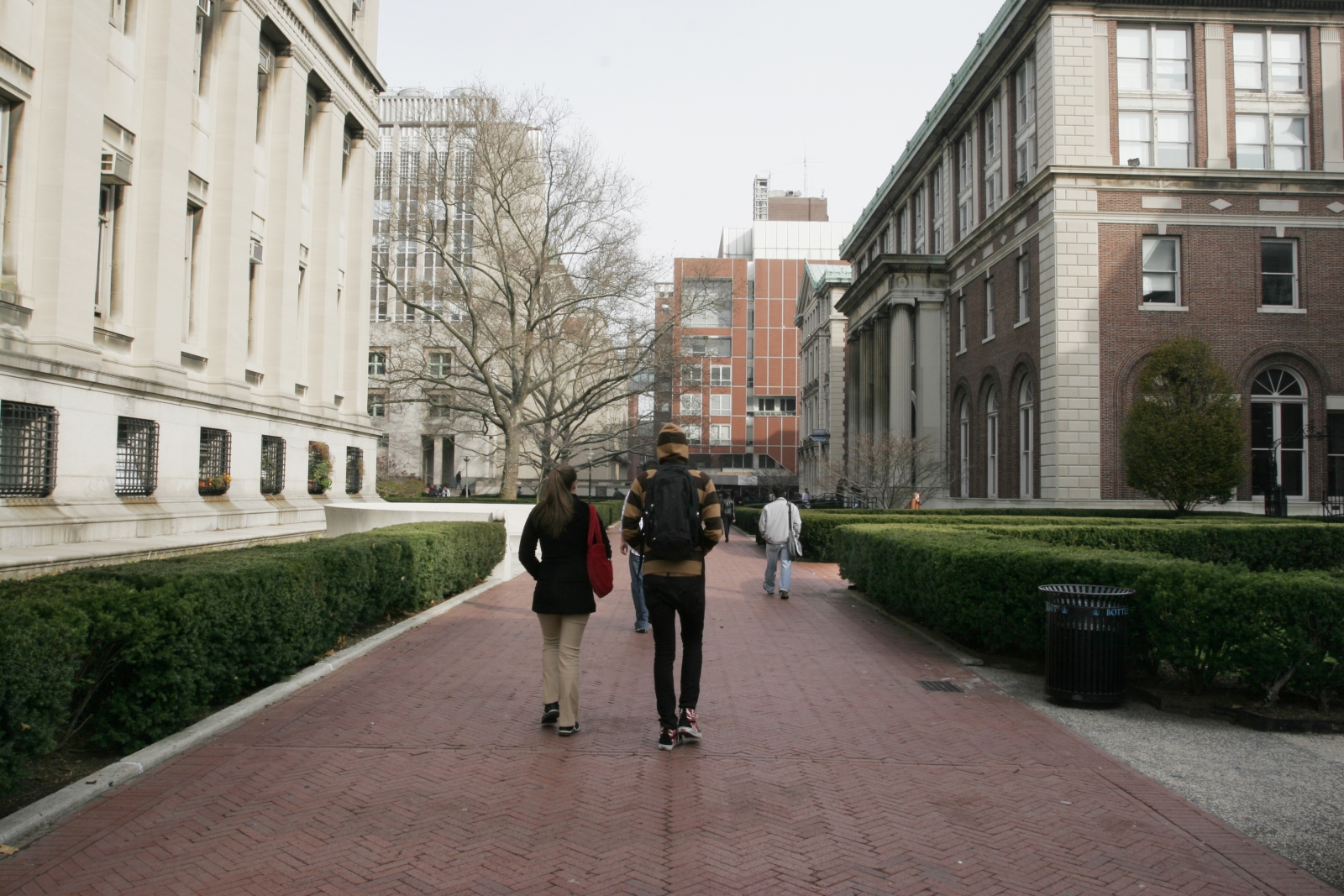
On campus at Columbia. Is it cheaper to live on or off-campus in New York? Depends. (Photo by 4×6/Getty Images)
With another year of college about to start up, returning students face an important decision: whether to stay in the dorms or move off-campus. This, of course, raises a host of other questions. Is it cheaper to move off-campus? Will I like living outside the dorms? Am I ready to live on my own? There are certainly several pros and cons to each option, and it’s a decision that should not be taken lightly. Here are some factors to consider when considering living on campus versus off-campus in NYC.
The Cost of Living On Campus Versus Off-Campus in NYC
When totaling the cost of living on campus versus off-campus in NYC, students should compare the total cost of room and board at their college to the total cost of their living situation off-campus, which would likely include rent, utilities, furniture, groceries, and eating out.
Of course, college in New York is a pricey choice, especially when it comes to room and board. At some schools, room and board can actually cost more than the tuition. Take the Fashion Institute of Technology (FIT), for example, which offers annual tuition of $6,870 for undergraduate New Yorkers and $20,792 for out-of-state residents. Room and board together total $18,468.
When the math is done, assuming that nine months out of the year are spent living and eating in the dorm, the total for living at FIT comes to about $2,052 per month. But compared to housing in Chelsea and Midtown, where FIT is located, and where the median rent for a 1-bedroom is $3,950 per month, that actually looks pretty affordable.

To dorm or not to dorm? (Hero Images/Getty Images)
According to a StreetEasy report, students whose schools are in expensive neighborhoods typically save money by living in the dorms, while those whose schools are in more affordable neighborhoods typically overpay for dorms.
However, students don’t have to live in the neighborhoods where their colleges are located. They can always save money by moving further away from their campus if it’s in an expensive area. Moving to the outer boroughs of New York can definitely save cash, as can getting a few roommates.
Students can also save money by ditching their dining plans, which usually aren’t very cost-effective. Of course, this only works if the student refrains from eating out often, which is easier said than done in NYC.
The Extra Costs of Living Off-Campus in NYC
Even if students find an apartment with rent cheaper than their dorm, they have to consider a few other factors. For example, most apartments operate on 12-month leases, meaning students will have to pay for 12 months of rent, even if they plan on leaving the city for summer or winter break. To combat this extra cost, students can always sublet their apartment, if they have somebody trustworthy who needs a place to stay.
Additionally, most apartments come unfurnished. While everyone needs to buy furniture at one point or another, it might become a bit of a hassle, especially if there are no plans to stick around after graduation. But a healthy mix of IKEA, flea market, and thrift store furniture can get the job done. And the pieces can always be sold after graduation.
Students who don’t stay in the city for the summer or leave the city for another extended period of time will also have to think about storing their furniture if they’re in-between moves. But that’s just another inevitable part of adulthood.
The Pros and Cons of Living in the Dorms in NYC

No one’s going to say you can’t make toast in your own apartment. But they’re not going to clean it for you, either. (Klaus Vedfelt/Getty Images)
Living in the dorms can be a fun experience for those who crave campus life, especially in NYC, where there might not be a lot of it to go around. Dorm life is a great way to meet other students and make countless memories together.
Dorms also offer a lot of convenience, with a doorman, elevator, security, onsite laundry, and maybe even air-conditioning. Students probably won’t find that full list of amenities in their first New York apartment. There are also great resources to be found in the resident advisor and other dorm staff.
Of course, it’s not all good. Some dorms have certain restrictions on things like the kinds of appliances students can have (say goodbye to your toaster), open flames such as candles or incense, and visitors signing in. Students often don’t get to choose where they live, neighborhood-wise or within the building. And ultimately, being around hundreds of college students in close quarters isn’t for everyone.
The Pros and Cons of Living Off-Campus as a Student in NYC
Apartments definitely grant students more privacy and more freedom. Sometimes you just want to light a candle or make some toast without worrying about it being a fire hazard. Or have a bunch of people over for late-night takeout and a movie without any limitations. Students will probably also have more space to put those guests, although considering the usual size of NYC apartments, not that much more.
Apartments also allow students to live wherever they please, whether that’s closer to or farther away from campus.
However, students who move off-campus will be giving up some convenience, such as their common spaces being regularly cleaned, and having someone to accept packages while they’re away. But all of that comes at a cost, and downsizing might save a whole lot of money.
And at the end of the day, everybody will eventually need to move into an apartment of their own, learn how to deal with a less-than-stellar landlord, pay their utilities, and call the plumber. Taking that step while still in college may only help in the long run.
—
Hey, why not like StreetEasy on Facebook and follow @streeteasy on Instagram?










